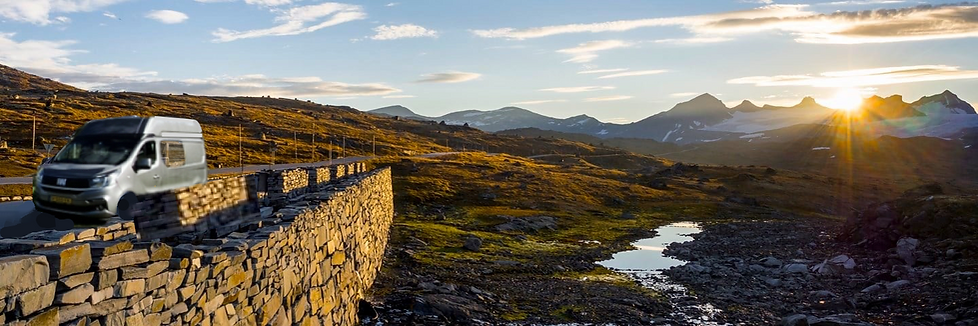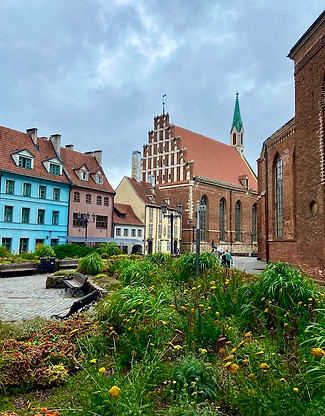

Ferry Trip around the Baltic Sea

Denmark
Sweden
land
Finland
Estonia
Latvia
Lithuania
The countries around the Baltic Sea or Baltic Sea, there is a lot of water that has to be crossed with a total of 10 ferries, crossing from half an hour to 12 hours, ferries from 30 m to huge ferries of 230 m.
The 7 countries in this trip provide a diversity of nature, population and experience, dynamic cities and the deafening silence and tranquility on Åland between Sweden and Finland.
Total kilometers to be driven 3620 and about 22 sailing hours.
For the crossing between Denmark and Sweden I chose the ferry between Helsingør Denmark and Helsenborg Sweden on the way there and back. On the one hand to be able to visit Helsengør, the crossing is slightly more expensive than the Oresund Bridge between Malmö and Copenhagen, but a relaxed crossing (less busy)

Inspired hit ?
Inquire about the itinerary
With route maps, campsites, ferry companies and apps for bookings, all ferries can be booked through the app.

Jonkopping

Jönköping located on the second largest lake in Sweden, called Vättern, in terms of nature the environment is richly endowed, In Jönköpping we made an overnight stop
Stockholm







Stockholm is built on 14 islands, all connected by bridges. On one of these islands you will find the special district of Gamla Stan. Gamla Stan, which literally means 'old town', is the old center of Stockholm. It is by the way not the oldest district, although the name suggests that, that is the island of Helgändsholem. Here you will find the parliament buildings.
land
Do you want to discover something special and a new destination? Then consider the archipelago of Åland, an archipelago consisting of about 20,000 islands, of which 60 are inhabited. Unlike the rest of Scandinavia, Åland has het all rights of man in force. Everyone's right is the customary law in Finland, Norway and Sweden to enter private land to enjoy the great outdoors. Limited in force. Nature is an important asset for the Alanders. It's not the only thing that's different on the special Åland. Although it is a Finnish region, Swedish is the official language. Åland has its own flag, its own number plates, its own stamps and many more "owns". It makes this group of islands a unique holiday destination that cannot be compared to anything. We are sure you will fall completely in love with this archipelago. The most special thing about Åland is the peace and the sometimes deafening silence







Small ferries maintain the connections between the inhabited islands, the terminal is usually only equipped with a shelter and a toilet. 3 to 4 departures per day.



Saunas are a must in the Scandinavian countries, and the canoe for islands in the area without connection


De most beautiful ecotourism destination where I've ever been.
Helsinki
Hesinki dates from the year 1550, but until the early nineteenth century Helsinki remained an unimportant coastal town. That changed when the Russians moved the capital from Turku to Helsinki in 1812. From then on, Helsinki grew rapidly.
Helsinki is full of modern architecture mixed with other style elements. For example, some districts consist largely of Jugendstil buildings. The city is built on mainly irregularly shaped islands, giving the city a different structure. There are several ports, there is no real ring road and Helsinki has a large number of bridges. The center is reasonably demarcated, but some of the culturally and recreationally important buildings are located outside the center. Helsinki is today a city with a high standard of living. Finns are ahead of the rest of Europe in many areas, including technology, but also education, medical care and legislation.

Helsinki Cathedral





Port of Helsinki


Oodi library

Tallinn Estonia

As a tourist you have to deal with two completely different parts of Tallinn. Centrally located is Vanalinn, the historic city center of Tallinn. If you would remove the cars, modern street lighting and all kinds of logos from the facades, you would just imagine yourself back in the Middle Ages. The old city center of the place, which for years was known as Reval, is so well preserved that Unesco placed the historic city center on the World Heritage List in 1997. The part of Tallinn that is outside the city walls had its main growth period during the Soviet Union. The Russians converted Tallinn into a Soviet stronghold in just a few decades. Just before the fall of the Soviet Union, more Russians of native inhabitants lived in Tallinn. After regaining its independence, Tallinn has undergone a transformation that actually continues to this day. The typical Russian residential blocks around the center have largely been replaced by new construction. For example, the Maakri and Kompassi districts in particular have become modern European districts, where less and less of the Soviet era can be seen. For tourists it is nice to also explore this part of Tallinn. For example, there is the Rotermanni quarter, where old factory buildings have been transformed into a hip city district by mixing with modern city architecture.








Riga Latvia


The Alliance of Hanseatic Cities is an extensive network connecting European cities in terms of trade. Riga is also an old Hanseatic city, just like Bergen in Norway and Hamburg in Germany. There are also Hanseatic cities in the Netherlands, such as Zutphen. Numerous cities formed such a trading network. Riga is a very good example of this. Due to the flourishing period of the Hanseatic cities, Riga experienced a period of great prosperity from the thirteenth to the fifteenth century, something you can still see in the beautiful buildings of the historic center of the city. In the nineteenth century, in combination with the period of prosperity in the nineteenth century, many stately buildings were added, making the historic center of Riga unique. Since 1997, Riga has been allowed to be listed on the UNESCO World Heritage List. When you are in the old town you learn a lot about the history of this part of Europe. Both from a cultural and economic point of view. The center of Riga is considered to be the largest collection of Art Nouveau buildings. When you walk through the streets of the old and the new center you imagine yourself in lost times.






Nostalgic train journey with fairly dated material, from Camping to Riga

klaipéda lithuania





Ferry night ferry crossing from Klaipéda Lithuania to Karlshamn Sweden

Helsingør or elsenore denmark


